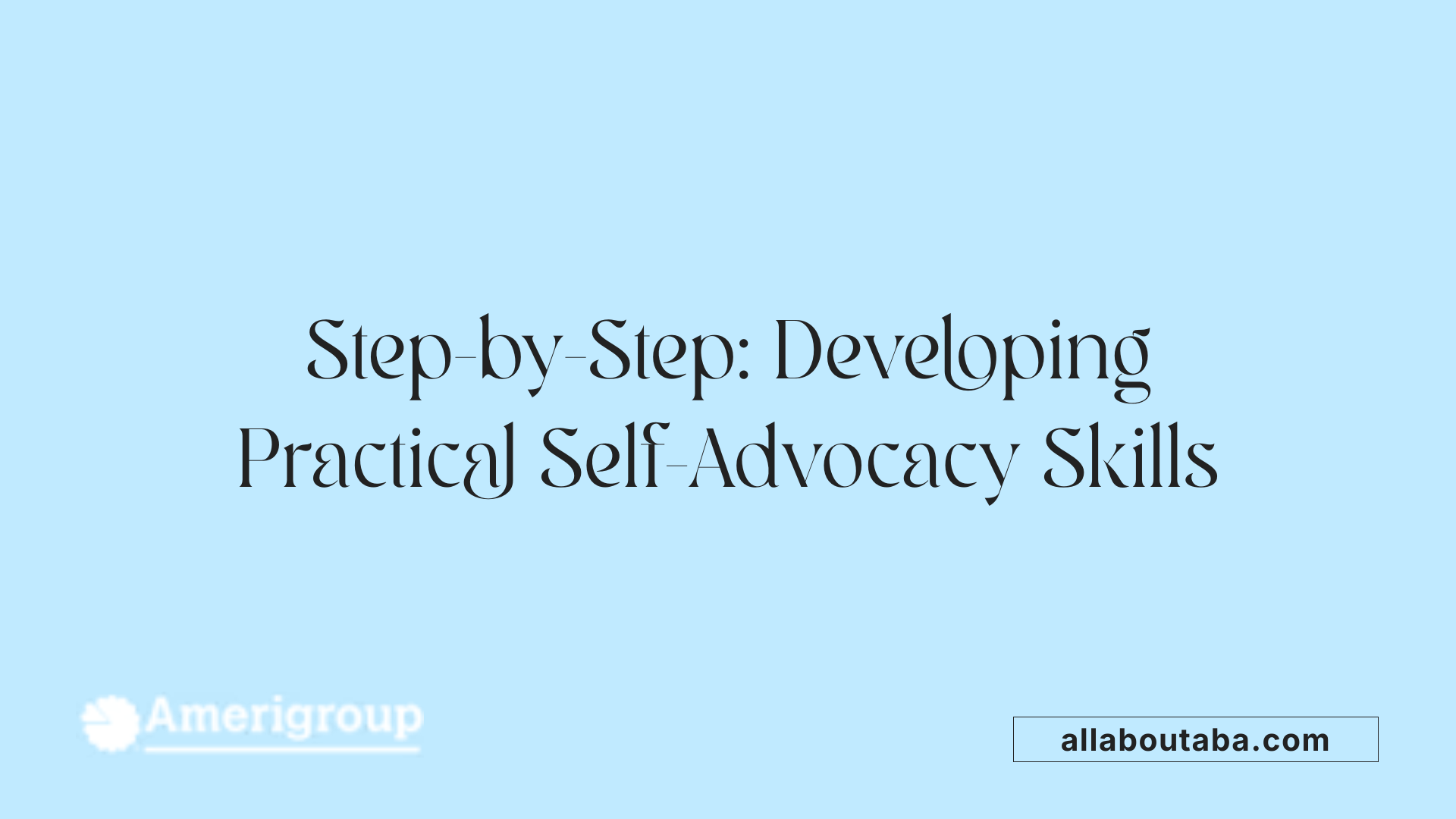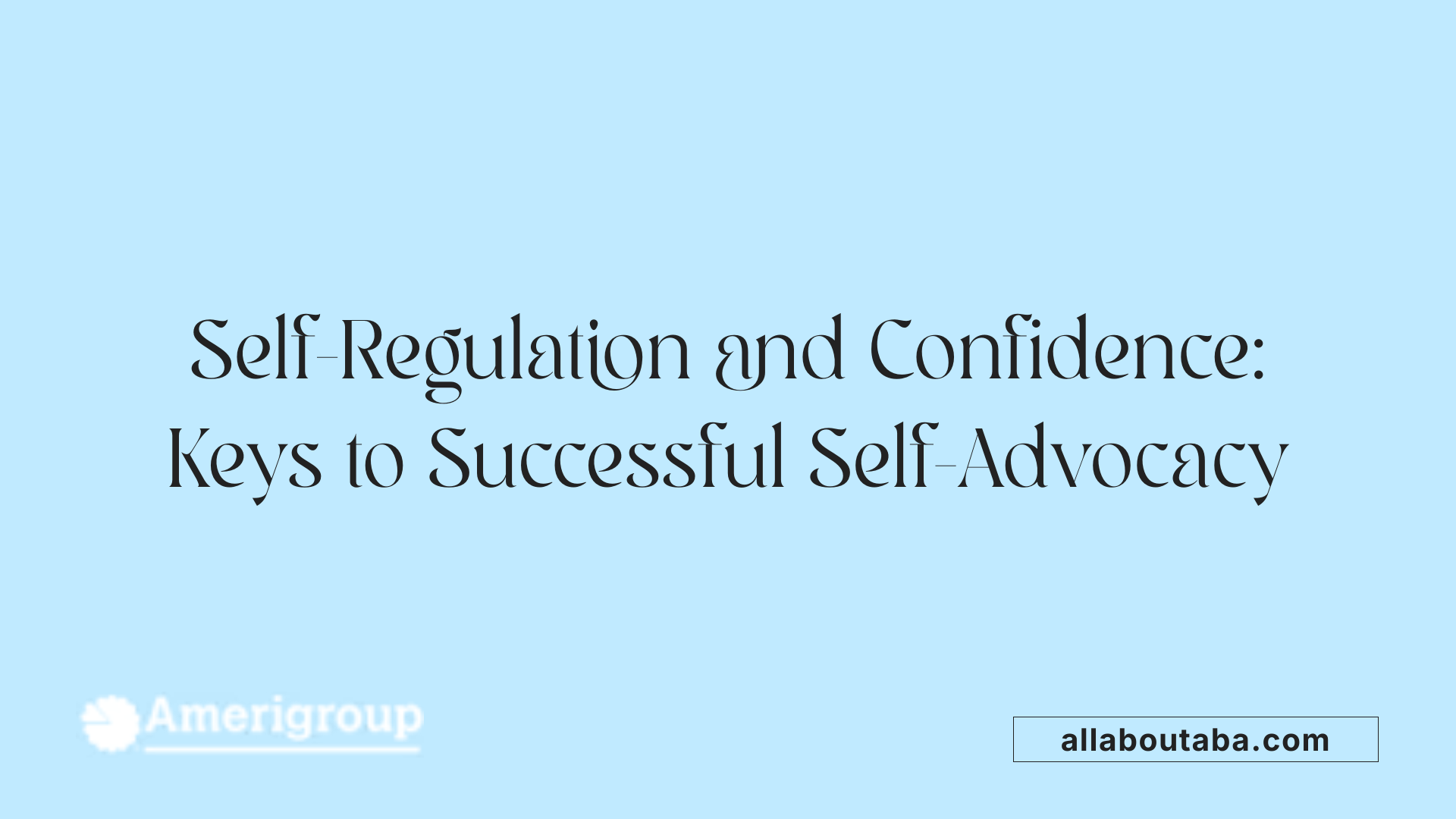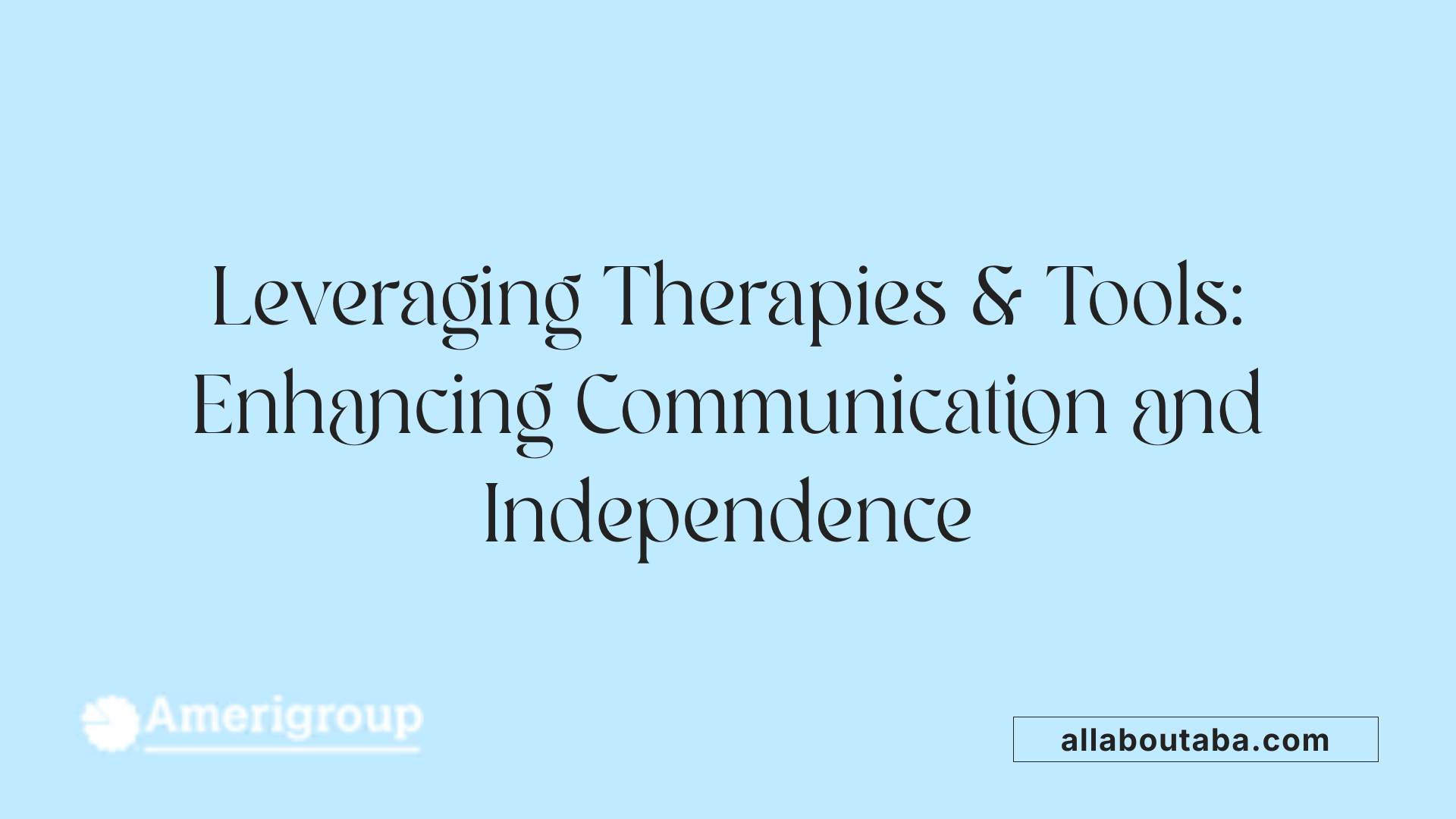A Guide to Fostering Independence and Confidence
Self-advocacy is a vital skill for autistic teens, enabling them to navigate their environments, access necessary supports, and advocate for their personal needs and rights. Introducing self-advocacy early and systematically prepares these young individuals for successful transitions into adulthood, higher education, and independent living. This article explores effective strategies, developmental considerations, and resources to help caregivers, educators, and professionals promote self-advocacy among autistic teens, emphasizing patience, practice, and community involvement.
Understanding the Principles of Self-Advocacy in Autism

What are the key steps in practicing self-advocacy for autistic teens?
Practicing self-advocacy effectively involves several important steps. First, developing self-awareness is crucial; teens need to understand their own needs, strengths, and challenges. Building this self-knowledge helps them identify what support or adjustments they require.
Second, fostering a growth mindset encourages confidence and resilience. Teens should view challenges as opportunities to learn and improve their advocacy skills.
Teaching self-advocacy through real-life scenarios enhances practical understanding. For example, role-playing asking for help or addressing unfair treatment allows teens to rehearse and refine their communication skills.
Supporting independence is vital. Giving teens opportunities to make decisions, such as choosing activities or expressing preferences, strengthens their ability to advocate for themselves.
It is also important to teach self-regulation skills, enabling teens to manage emotions and impulses during advocacy efforts.
Finally, reflection on each experience helps teens learn what strategies work best, adjust their approach, and gradually improve their self-advocacy capabilities over time.
Developmental Stages and Tailored Support Strategies

What are the key steps in practicing self-advocacy for autistic teens?
Practicing self-advocacy for autistic teens involves several important steps that build on each other to foster independence and confidence. Initially, teens learn to identify their feelings, needs, and triggers. This self-awareness allows them to articulate what they require in different situations.
Next, they practice communicating these needs effectively. This can involve role-playing scenarios such as asking a teacher for accommodations or requesting a sensory-friendly environment. As confidence grows, teens should be encouraged to participate actively in meetings like IEP or 504 plan reviews, helping them understand their rights and preferences.
Gradually, teens develop the ability to negotiate and problem-solve. This includes practicing saying no or setting boundaries, which is vital for personal safety and mental health. Exposure to real-world social situations, like medical appointments or social outings, provides practical experience.
Support from family, educators, and peer mentors is essential during this process. Using visual supports, social stories, and personalized prompts can ease communication challenges, especially for those with limited speech.
Encouraging reflection and celebrating successes reinforce self-efficacy. Over time, these steps empower teens to make decisions confidently and advocate for themselves across various environments, setting a foundation for lifelong self-determination.
What is an example of self-advocacy in autism?
An example of self-advocacy in autism is a person with autism speaking up for their own needs and accommodations, such as requesting a quiet space or sensory tools when overwhelmed. It can also involve advocating for access to communication devices or tailored educational supports to enhance independence.
Self-advocacy includes understanding one's rights under laws like IDEA and ensuring these are upheld in educational and community settings.
Additionally, individuals may participate in support groups or advocacy organizations to learn how to effectively voice their needs and promote acceptance.
Ultimately, self-advocacy empowers individuals with autism to participate actively in decisions affecting their lives and to seek the resources and support they require.
How can age-specific methods support self-awareness and independence?
Teaching self-advocacy to children with autism should be tailored to their developmental stage. For infants and toddlers, foundational skills include understanding their needs and expressing basic feelings, such as discomfort or hunger, often through non-verbal cues. Parents can model this behavior and introduce simple communication supports like picture schedules.
In early childhood, children begin learning to identify their preferences and triggers. Activities like choice boards for selecting meals or activities foster decision-making skills. Role-playing and social stories help children practice expressing needs in familiar scenarios.
During childhood, emphasis shifts to building skills around problem-solving, understanding personal boundaries, and participating in planning routines. Visual aids like social scripts or visual schedules support accurate communication and independence.
Pre-teens and teenagers focus on more complex skills: advocating for accommodations in school and social settings, participating actively in transition planning, and understanding rights and responsibilities. In this stage, they learn to assert boundaries with peers, navigate social conflicts, and articulate their identity.
Supporting adolescents might include involving them in community activities, offering decision-making opportunities, and gradually increasing their responsibilities in managing health and education. This progression nurtures a sense of autonomy, prepares them for adulthood, and reinforces their ability to navigate societal systems confidently.
How do different assessment and support tools aid in this developmental process?
Various tools and methods are used to facilitate self-advocacy development suited to each age and ability. For non-verbal or limited-verbal individuals, assistive technologies like AAC devices, picture communication boards, and visual supports are crucial. These tools help them express preferences and needs clearly.
Social stories and role-play scenarios provide context-rich practice for understanding social cues and practicing advocacy strategies. Visual schedules and choice boards encourage independence by helping children anticipate routines and make decisions.
Involving children in their education planning through accessible formats, such as simplified language or visual aids during IEP meetings, fosters understanding and participation. Digital tools like quizzes, transition workbooks, and checklists guide teenagers through steps toward independence and support planning.
Legal and informational resources, including rights education, are essential for older teens and adults. Knowing their rights under laws like ADA empowers them to advocate confidently for accommodations and protections.
Overall, these tailored supports and tools are vital in helping children with autism develop into independent, self-advocating individuals, respecting their individual needs and developmental progressions.
How can community and family involvement enhance self-advocacy skills?
Community and family involvement are central to nurturing self-advocacy skills. Families serve as primary role models, demonstrating assertiveness and support in daily routines and decision-making. They can create opportunities for children to practice asking for help, expressing preferences, and making choices.
Supporting social integration through community activities, camps, or social groups exposes children to real-life interaction and advocacy scenarios. Gradually increasing these experiences helps children develop confidence and independence.
Support groups, including peer networks and adult mentors, offer valuable perspectives and strategies for self-advocacy. Listening to success stories and participating in group discussions reinforce the importance and feasibility of advocating for oneself.
Educational programs can include training for families to learn effective ways to encourage independence and self-advocacy at home. Collaboration between families, schools, and community services ensures consistent practice and reinforcement across environments.
This collective effort promotes a supportive environment where children learn that their voices matter, fostering a lifetime of self-determination and respect for their individual journey.
Strategies for Implementing Self-Advocacy Education
In-module instruction within school curricula
Incorporating self-advocacy skills into school curricula is vital for fostering independence among autistic children and teens. Teachers can embed activities focused on communication, problem-solving, decision-making, and understanding rights into daily lessons. For example, using social stories and role-playing scenarios helps children practice advocating for themselves in real-life situations.
Explicit instruction on personal boundaries, expressing preferences, and understanding accommodations supports their growth. Visual supports like choice boards, schedules, and simple language explanations enable students, especially those who are nonverbal or limited-verbal, to participate meaningfully. Educators should also provide opportunities for students to practice identifying their feelings, coping strategies, and triggers, fostering self-awareness.
Supporting development in these areas through continuous, scaffolded experiences helps children become more confident in their ability to self-advocate, shaping them into proactive learners capable of managing their needs.
Role of IEPs and transition planning
Individualized Education Programs (IEPs) play a crucial role in teaching self-advocacy. Involving students early in their IEP meetings encourages participation and helps them understand their rights and educational goals. Using simple language or pictures during meetings makes the process accessible, and technological tools like recorded statements or digital platforms can facilitate student input even if they cannot attend in person.
Encouraging students to contribute to their IEPs by discussing their preferences, challenges, and goals fosters a sense of ownership and responsibility. Developing transition plans starting around ages 14-16 further prepares them for adult independence. These plans can include participation in community activities, employment training, and practicing self-advocacy in real-world contexts.
Supporting students in understanding their legal rights, such as access to accommodations under laws like IDEA, ensures they are empowered to request support when needed. Embedding self-advocacy skill-building into the IEP process promotes lifelong independence and helps smooth the transition into adulthood.
Community and social experiences
Experiences outside the classroom play a pivotal role in developing self-advocacy. Exposure to social situations—such as sleepovers, camps, or community events—enables autistic youth to practice communication and independence skills in real-world settings.
Gradually increasing the complexity of these experiences helps them build confidence. For nonverbal or limited-verbal teens, modeling preferences through behaviors or using visual aids prior to social outings supports effective communication.
Encouraging participation in social groups, supported by peer mentorship or support groups, fosters understanding of social norms and assertiveness. Autistic adults sharing their experiences through blogs, social media, and books serve as powerful role models inspiring trust and demonstrating practical advocacy strategies.
Enhancing self-advocacy through real-life experiences encourages autonomy and prepares children and teens for future challenges in education, employment, and personal relationships.
| Strategy | Description | Support Tools |
|---|---|---|
| Classroom integration | Embedding advocacy activities into lessons | Choice boards, social stories |
| IEP participation | Involving students early and meaningfully in planning processes | Digital input methods, visual aids |
| Real-world social experiences | Gradually exposing to social settings to practice advocacy | Visual supports, role-playing, peer support |
| Role-playing scenarios | Rehearsing real-life interactions to build confidence | Scripts, feedback sessions |
| Community involvement | Encouraging participation in community activities | Support groups, mentorship programs |
Building self-advocacy skills is a continuous journey requiring patience and consistent support. Strategies like explicit teaching, involving students in their education, providing social experiences, and modeling advocacy behaviors all contribute to empowering autistic youth. These approaches foster independence, self-confidence, and the ability to navigate complex societal environments effectively.
Supporting Self-Regulation and Confidence Building

What are effective strategies for teaching self-advocacy skills to autistic youth?
Teaching self-advocacy to autistic youth involves a combination of strategies aimed at improving communication, self-awareness, and decision-making skills. Parents, educators, and therapists can use practical methods such as communication skills training, social stories, and role-playing scenarios. These techniques help children understand how to express their needs and preferences clearly. Incorporating education about legal rights and responsibilities, like the Americans with Disabilities Act (ADA) and Individuals with Disabilities Education Act (IDEA), empowers children with knowledge about their entitlements. Visual aids—such as visual schedules, choice boards, and picture charts—support communication, especially for nonverbal or limited-verbal children. Active participation in the Individualized Education Program (IEP) process is also crucial. Children can rehearse meeting procedures, express their goals, and learn to disclose their needs safely and effectively. Practice opportunities, such as role-reversal exercises and real-world scenarios like medical appointments or ordering food, reinforce their skills. Building confidence requires consistent positive reinforcement through praise and tangible rewards. Family involvement plays a vital role; by modeling assertiveness and supporting independence at home, families foster ongoing skill development. It’s essential to tailor these strategies to each child's unique abilities and preferences, making learning self-advocacy an enjoyable and self-empowering journey.
What are the key steps in practicing self-advocacy for autistic teens?
Practicing self-advocacy in autistic teens involves a step-by-step approach, starting with understanding personal needs and preferences. Initially, teens should learn to identify what triggers stress or discomfort, and communicate these effectively. This may involve using verbal language, sign language, or assistive devices. Encouraging teens to participate actively in meetings such as IEP or 504 plan reviews helps them understand their educational rights and express their needs directly. Giving them choices in daily routines—like selecting meals or recreational activities—enhances decision-making skills and independence. Role-playing different scenarios, such as asking a teacher for help or explaining sensory sensitivities, helps teens rehearse communication strategies in a safe environment. Gradually, these skills are practiced in real settings, including medical visits, social events, or workplace situations. Supporting self-disclosure about their autism diagnosis is also part of practicing self-advocacy. Teens should understand when and how to share their needs and supports with trusted individuals, respecting their privacy while advocating for necessary accommodations. Ongoing practice, patience, and support from family and community are essential. Teens gain confidence as they master these skills, making self-advocacy a natural part of their daily lives.
What does self-advocacy entail for teens with autism?
Self-advocacy for teens with autism goes beyond just speaking up; it involves actively managing their own lives by understanding and articulating their needs, rights, and preferences. It includes learning how to ask for help when needed, negotiate accommodations, and set personal goals. As they grow, teens are encouraged to participate in planning their educational paths, employment opportunities, and daily routines. This might mean voicing preferences at school, requesting specific accommodations, or making decisions about their future careers. Effective self-advocacy involves developing self-awareness about their strengths and challenges, and using tools such as visual supports, social stories, and communication devices. It also means understanding when and how to disclose their condition for necessary supports, while respecting their privacy. Supporting self-advocacy entails personalized instruction, opportunities to practice real-world interactions, and fostering a growth mindset that views challenges as opportunities to learn. Ultimately, self-advocacy empowers teens to navigate social situations confidently, connect with resources, and become independent adults capable of managing their own wellbeing.
Why is self-regulation important in self-advocacy?
Self-regulation is a foundational component of effective self-advocacy. It enables teens to control their emotions, impulses, and reactions, particularly during challenging or stressful interactions. When individuals can stay calm and focused, they are better able to communicate their needs clearly and assertively. Developing self-regulation skills allows autistic teens to exhibit patience and resilience when facing social or environmental barriers. This emotional control helps prevent situations from escalating and fosters productive problem-solving. For example, a teen who can manage frustration during a conversation about accommodations is more likely to negotiate successfully without withdrawing or acting out. Practicing coping strategies such as deep breathing, mindfulness, or sensory breaks supports emotional regulation. These techniques can be incorporated into daily routines or specific situations where stress or overwhelm arises. By mastering self-regulation, teens become more confident and independent, capable of advocating for themselves in various settings—from school and work to personal relationships—ultimately leading to greater autonomy and life satisfaction.
| Aspect | Description | Supporting Techniques |
|---|---|---|
| Communication | Expressing needs, preferences, feelings | Visual supports, AAC devices, social stories |
| Self-awareness | Recognizing emotions, strengths, triggers | Mood charts, feelings identification exercises |
| Decision-making | Choosing options and setting goals | Choice boards, goal ladders |
| Assertiveness | Speaking up respectfully and clearly | Role-playing, modeling, positive reinforcement |
| Emotional regulation | Managing stress and reactions | Mindfulness, sensory breaks, breathing exercises |
| Disclosure | Sharing diagnosis and needs with others | Simple language, confidentiality awareness |
| Participation | Engaging in meetings and planning | Early involvement in IEP, rehearsals |
| Support seeking | Asking for help and accommodations | Practice scenarios, support person training |
This comprehensive approach integrates emotional regulation techniques, resilience building through successful experiences, and confidence development—all crucial for empowering autistic youth to become effective self-advocates.
Role of Therapies and Tools in Self-Advocacy Development

How are therapies like ABA used to enhance self-advocacy?
ABA therapy plays a vital role in empowering adolescents with autism to become confident self-advocates. It focuses on teaching them to make meaningful choices, express their preferences, and develop the independence needed to speak up for themselves. Through carefully structured activities, ABA therapists utilize strategies such as role-playing, decision-making exercises, and personalized prompts tailored to each individual's developmental level.
Role-playing is particularly effective, allowing teens to practice real-world scenarios like requesting accommodations, advocating during medical appointments, or asserting boundaries with peers. These simulated interactions are followed by constructive feedback, which enhances their communication and social skills.
ABA also employs visual supports like choice boards and visual schedules that make options clear and accessible. These tools are especially useful for nonverbal or limited-verbal teens, helping them understand their choices and communicate more effectively. As they practice, reinforcement techniques—such as rewards and praise—strengthen their self-advocacy behaviors, gradually building their confidence.
By systematically promoting these skills, ABA therapy helps teens transition from dependence to independence in advocating for their needs in school, healthcare, employment, and everyday life.
Effective Strategies for Teaching Self-Advocacy Skills to Autistic Youth
Teaching self-advocacy involves creating an environment where children feel safe and supported in developing their skills.
- Starting early with giving children choices about meals, activities, and routines encourages decision-making.
- Including them in meetings like IEP or 504 plan reviews helps them understand their rights and needs.
- Using role-reversal and social stories provides opportunities for practice and understanding.
- Teaching about rights and responsibilities provides foundational knowledge.
- Modeling assertive communication through parents and teachers demonstrates expected behaviors.
- Using visual supports such as picture charts and choice boards makes concepts more tangible.
- Gradually increasing responsibilities—from simple preferences to complex negotiations—prepares them for independent advocacy.
Use of visual supports, choice boards, and AAC devices
Visual supports are cornerstone tools that facilitate communication, especially for those limited in verbal expression. Choice boards display options—foods, activities, or preferences—allowing children to indicate their selections nonverbally or with assistive devices. AAC devices, including speech-generating devices or apps, expand communication possibilities for nonverbal children. By conveying their needs and preferences through these tools, children become more active participants in their social and educational environments. Sharing preferences via visuals or AAC supports helps children initiate conversations about their needs, negotiate accommodations, and build confidence in advocating for themselves.
Benefits of social stories and role playing
Social stories are personalized narratives that outline typical social situations, expectations, and appropriate responses. They help prepare children for real-life advocacy scenarios by providing clear, visual illustrations of what to do. Role-playing scenarios allow children to practice specific skills like asking a teacher for help or explaining their sensory needs in a safe, controlled environment. These activities enhance understanding, reduce anxiety, and improve skill transfer to everyday situations.
Together, these tools and strategies equip children with autism to understand their rights, communicate effectively, and advocate confidently across various settings, laying a foundation for lifelong self-determination and independence.
Community and Family Role in Promoting Self-Advocacy
What are effective strategies for teaching self-advocacy skills to autistic youth?
Teaching self-advocacy to children and teens with autism involves a multifaceted approach tailored to their individual needs. Strategies include communication skills training, social stories, role-playing scenarios, and self-determination exercises. These methods help children learn to express their preferences, state their needs, and understand their rights.
Practicing real-life situations such as medical appointments or ordering at restaurants provides practical experience. Involving them early in planning their goals—like through visual schedules or choice boards—encourages independence.
For nonverbal or limited-verbal individuals, communication aids like AAC devices or visual supports are used to facilitate expression. Role-playing and role-reversal activities build confidence in social and assertive communication. Visual aids and simple language are often employed to support understanding.
Supportive classroom environments, participation in IEP meetings, and gradual exposure to new social situations further reinforce skills. Overall, fostering an environment of patience, practice, and positive reinforcement helps develop their ability to advocate confidently for themselves.
How does family support influence self-advocacy development?
Parents and family members are fundamental in developing a child’s self-advocacy skills. By modeling assertive communication, supporting independence, and offering consistent decision-making opportunities, families lay a strong foundation.
Openly discussing autism within the family helps foster understanding and comfort, emphasizing strengths while addressing challenges. This open dialogue builds confidence and encourages children to view themselves as capable advocates.
Participation in planning processes—such as IEP and transition meetings—ensures that students’ voices are included, cultivating their sense of agency.
Community support networks and social activities extend this learning into real-world settings. They provide environments where children can practice advocating for themselves and learn from peers.
Importantly, exposure to autistic adults sharing their experiences reinforces the message that independence and self-advocacy are attainable. Such role models demonstrate successful navigation of adult life, inspiring young people to develop their own skills.
Involving autistic adults as role models
Autistic adults serve as powerful role models and mentors, showing lived examples of successful advocacy and independence. Their stories in blogs, social media, and books illustrate how skills can be developed and challenges overcome.
These role models provide authentic insights into managing adult responsibilities, employment, relationships, and self-advocacy. Their presence helps reduce stigma and dispel misconceptions about autism.
Including autistic adults in education, community programs, and advocacy initiatives offers young people relatable examples of resilience and achievement. It emphasizes that autism is a facet of identity that encompasses strengths and diverse experiences.
Moreover, interactions with autistic adults foster mentorship opportunities, allowing youth to ask questions, gain advice, and observe real-world application of self-advocacy skills.
Building a supportive environment for self-advocacy
Creating a nurturing and inclusive environment requires collaboration among families, educators, community members, and autistic adults. This collective effort helps embed self-advocacy into daily routines and life planning.
Strategies include professional development for educators on supporting self-advocacy, community awareness initiatives, and establishing peer support groups.
Incorporating advocacy training into school curricula, involving students in decision-making, and promoting participation in community activities empower autistic youth.
By fostering these environments, we prepare young individuals to navigate life's complexities with confidence, independence, and resilience.
Empowering the Next Generation
Developing self-advocacy skills in autistic teens is a multifaceted process that benefits from early intervention, tailored strategies, community engagement, and ongoing support. By encouraging self-awareness, communication, independence, and resilience, caregivers and educators can equip autistic youth with the tools necessary for self-determination and fulfilling independence. Respecting individual differences and promoting inclusive practices across educational and societal settings are key to fostering empowered, confident adults who advocate for themselves and their communities. Building this foundation today ensures that autistic teenagers are prepared to navigate life's challenges successfully and confidently.
References
- Teaching Your Child Self-Advocacy - Autism Speaks
- Self-Advocacy Skill Building for Teens - Milestones Autism Resources
- Self-Advocacy - The Autism Community in Action
- Empowering autistic youth to be self-advocates - Children's National
- How to teach self advocacy to your student with disabilities
- Research-Based Recommendations for Building Self-Advocacy ...
- Self Advocacy - Autism Research Institute
- Help Children Learn How to Self Advocate
- The Importance of Self-Advocacy in the Transition Process







